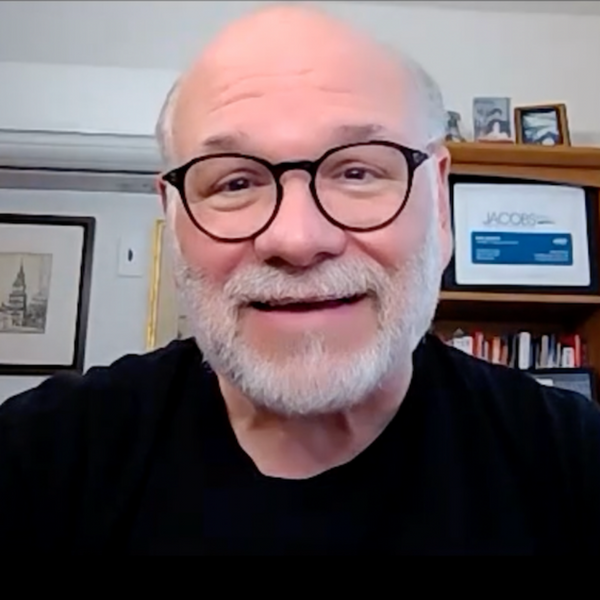Ben Finzel’s Commitment to DE&I
By Ken Jacobs
June-July 2023
Ben Finzel is a distinguished communications strategist who currently serves as president of RENEWPR, a Washington, D.C.-based communications consulting firm that provides strategic counsel, messaging and outreach to clients ranging from associations and corporations to foundations and NGOs.
He served as a congressional staffer for two Democratic members of Congress, a presidential appointee at the U.S. Department of Energy and PR agency executive at five firms before starting RENEWPR in 2015.
Finzel is also actively involved with several professional and LGBTQ advocacy organizations. In 2004, he helped launch FH Out Front, the first global LGBTQ communications practice at an international PR firm.
Here, Finzel discusses the importance of DE&I as a business imperative and the evolution of his leadership skills.
You’ve been an outspoken advocate for DE&I for decades. Why is DE&I such a business imperative for both communications agencies and businesses?
DE&I isn’t “nice to do” or optional; it’s a required part of successful communication today. Communicators have a responsibility to provide clear, compelling and considerate advice to our clients, colleagues, customers and partners. We can’t do that if we don’t reflect the audiences we’re trying to reach and influence.
DE&I is common sense. Doesn’t it make sense that we need to be inclusive of the people we are trying to engage in our outreach? Isn’t it common sense that since we aren’t all the same, we need different people with different perspectives and life experiences to work together collaboratively to address problems affecting all of those different audiences? Isn’t it eminently sensible that respect and understanding is at the core of all successful communications?
We need a diverse array of people with diverse life experiences to ensure that we can effectively communicate in a respectful way that demonstrates true understanding.
Despite all the sound and fury about being “woke,” the truth is audiences will tune you out — or worse — if they don’t think you truly care about them. The time of patronizing platitudes is over; if you’re not authentic and appropriate in your communications, then you will not be successful.
Many agencies say they are committed to DE&I, but statistics show we have far to go. Why the gap?
It’s easier to say the right thing than to do the right thing. True commitment to DE&I requires engagement, asking tough questions, acting on the answers to those tough questions and then sticking with those decisions over time. You can’t stop because it gets tiring or because you don’t think anyone is paying attention anymore.
One of the most frustrating phrases I’ve heard recently is the term “diversity fatigue.” It’s the height of arrogance and privilege and so offensive on so many levels.
Committing to DE&I means acknowledging that you’ve made mistakes, that maybe you aren’t paying people equitably, that maybe promotions have been uneven and that expectations for performance aren’t the same for people doing the same jobs. Acting on DE&I means changing your business practices and considering whom you support and why.
Who are your clients? Are some of them actively seeking to divide people with their policies and practices rather than bringing people together? Are they writing checks to legislators seeking to take away rights from certain groups of people or deny them altogether? Who are your spokespeople? What do they say and when do they say it? Do you shy away from commenting on “difficult” topics even though you know you should stand up for what is right?
All these considerations come into play in committing to DE&I. It requires a lot more work than just a few nice statements.
What are the three most important things you’d advise agencies who want to achieve their DE&I goals?
For starters, commit to doing the work and seeing it through. Determine what makes sense for your organization, make a plan and hold yourself accountable to it. Understand that once you start, you can’t stop.
The second step: Get help. Most people aren’t equipped to do this work without outside counsel. Just like everyone needs an editor, everyone needs external help to see what they can’t see for themselves, and to learn and ultimately understand how to address the problems and tackle the challenges.
Lastly, consider what you can legitimately do now and what will take more time to accomplish. Not everyone can do everything right away. Depending on your organization, you may need to do some internal work first. When we work with clients, we always start on the inside. If a company or organization doesn’t have its own house in order, then it’s really tough to engage external audiences.
Understand that while intention is good, action is better. Determine what you can do and when and start doing it. This work can’t be accomplished overnight. Don’t assume that because you can’t do it all right now, you can’t do anything. Do something. Get started. Keep going.
What do you consider to be your worst leadership faux pas?
As a work in progress, here are four that I’m still learning:
• Thinking that everyone shares the same urgency about action that I do. They don’t. That doesn’t make them wrong or bad; it just makes them different. I’m learning that my urgency is driven by my concerns. Other people have other concerns. And they may be just as valid — if not more so — than mine. Learning to extend grace to others when they don’t “do what you want them to do, when you want them to do it” is something I’m still learning.
• Assuming that I have to be friends with everyone to be a good leader. It’s always nice to be liked, but leaders also need to be respected. Finding that balance is an ongoing consideration, and one that I’m always learning more about how to do.
• Taking things personally when I shouldn’t. I’m learning that it’s better to let some things go and not let them bother or consume you. Leadership is about example and about editing; considering the former when deciding how to respond to a situation can be helpful and will likely require employing the latter.
• Understanding when my enthusiasm can be too much for others. My enthusiasm can be too much for some people at some times, even though it’s well-intentioned. I’m not generally afraid to share my thinking or express my support or opposition to something.
That can be off-putting to people who aren’t as outwardly expressive. I’m learning that it’s helpful to temper my enthusiasm with understanding that others might not share it or express it in the same way.



